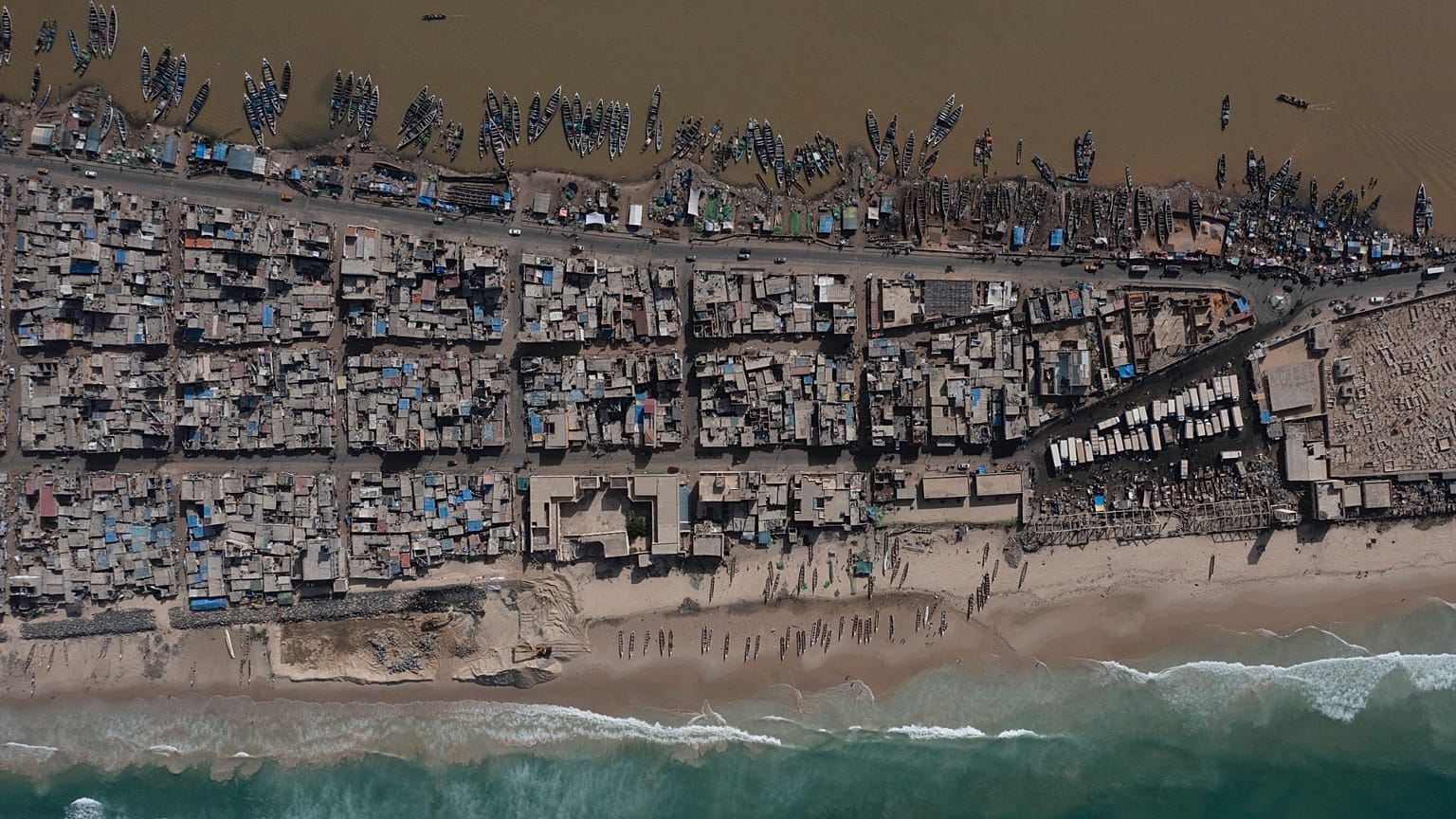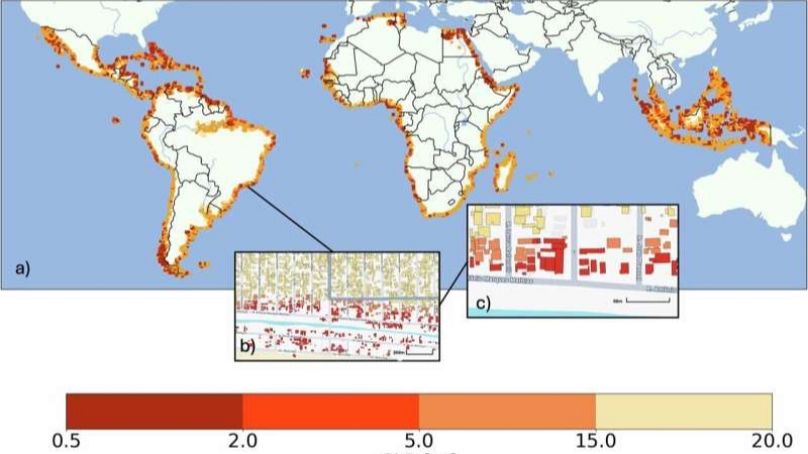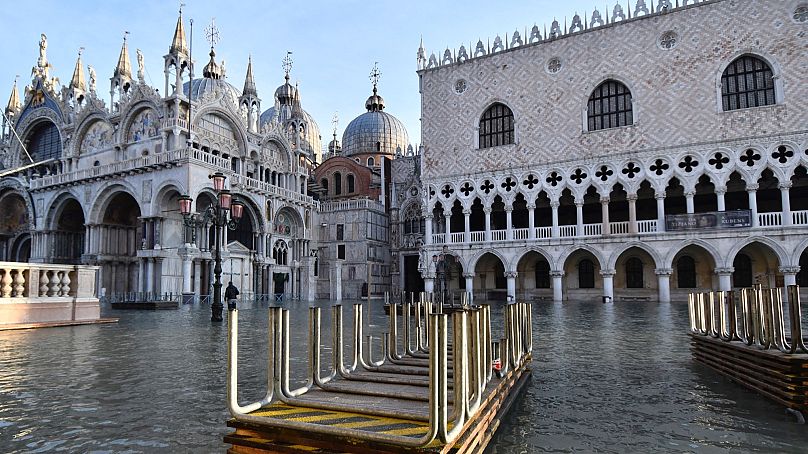Fossil fuel emissions need to be ‘curbed quickly’ to prevent millions of buildings from becoming a regular flood risk.
Sea levels will drastically rise and push millions of buildings into danger if the world continues burning fossil fuels, a new report has warned.
Researchers have conducted the first-ever large-scale, building-by-building assessment on the future of coastal infrastructure across the Global South - covering Africa, Southeast Asia, and Central and South America.
Using detailed satellite maps and elevation data, scientists estimated how many buildings would be “inundated” at various levels of sea over multi-century timescales.
An ‘unstoppable consequence’ of global warming
Published in Urban Sustainability, the study explores scenarios between 0.5 and 20 metres of sea level rise. It found that even the lowest increase (predicted to occur even if emissions are significantly cut) would result in around three million buildings being flooded regularly.
“Sea level rise is a slow, but unstoppable consequence of warming that is already impacting coastal populations and will continue for centuries," says professor Natalya Gomez, co-author of the study and Canada Research Chair in Ice Sheet–Sea Level Interactions at McGill University.
“People often talk about sea level rising by tens of centimetres, or maybe a metre, but in fact it could continue to rise for many metres if we don't quickly stop burning fossil fuels.”
Rising sea levels could impact ‘entire neighbourhoods’
If sea levels were to rise to five metres or more – which experts warn could happen within a few hundred years – more than 100 million buildings will be put at risk.
“We were surprised at the large number of buildings at risk from relatively modest long-term sea level rise,” adds professor Jeff Cardile, co-author and professor at McGill University.
“Some coastal countries are much more exposed than others, due to details of the coastal topography and locations of buildings.”
Many of these buildings are located in densely populated and low-lying areas, meaning critical infrastructure and "entire neighbourhoods” would be impacted.
Are sea levels rising in Europe?
While the McGill-led study only focuses on the Global South, rising sea levels are a severe threat for the whole world - including Europe.
Last year, a modelling study published in Scientific Reports found that damage caused by sea level rises could cost the EU and UK economies billions by the end of the century.
Researchers estimated potential economic losses and gains compared to a scenario with no sea level rises and a two per cent annual economic growth across all regions - combined with previous data on economic losses caused by 155 flooding events across the continent between 1995 and 2016.
They found that under a high emissions scenario, sea level rise could cost a staggering €872 billion in total by the year 2100.
Regions slated to be hit the hardest by rising sea levels included Veneto and Emilia-Romagna in Italy, Zachodniopomorskie in Poland, as well as concentrated areas around the Baltic Sea, the Belgian coast, western France and Greece.
However, rising sea levels are already having a devastating effect across Europe. In Barcelona, for example, residents fear that man-made beaches are being swallowed up due to climate change.
Back in 2019, Venice suffered catastrophic flooding linked to high sea levels and heavy precipitation - which resulted in hundreds of millions of euros worth of damage. Over in Greece, on the island of Delos, UNESCO world heritage sites have already witnessed structural damage due to increased flooding.




















